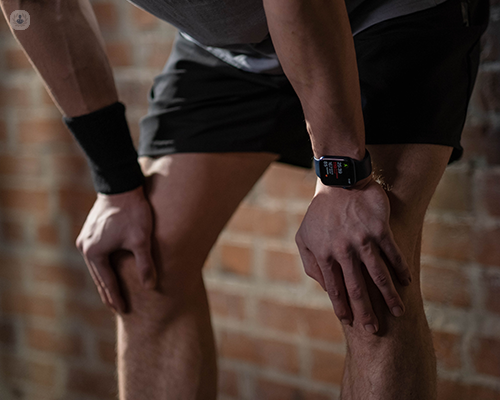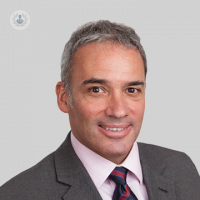Exploring knee arthroscopy: A comprehensive guide
Written in association with:Knee arthroscopy is a minimally invasive surgical procedure aimed at diagnosing and treating a variety of knee problems. Leading consultant trauma and orthopaedic surgeon Mr Tony Andrade delves into what knee arthroscopy entails, its benefits, risks, and what to expect before, during, and after the procedure.

Understanding knee arthroscopy
Knee arthroscopy is a surgical technique that allows us to examine and treat the inside of the knee joint using a small camera called an arthroscope. This instrument is inserted through small incisions around the knee, providing a clear view of the joint's interior on a monitor. By doing so, we can diagnose and address issues such as torn cartilage (meniscus), ligament tears, damaged surfaces of the joint, and loose fragments of bone or cartilage.
Benefits of knee arthroscopy
One of the primary benefits of knee arthroscopy is its minimally invasive nature. Compared to traditional open surgery, arthroscopy typically results in less pain, minimal scarring, and a quicker recovery time. Additionally, because the incisions are small, there's a reduced risk of infection and less damage to surrounding tissues.
Common conditions treated
Knee arthroscopy is commonly used to address various knee problems, including:
Meniscus tears: Tears in the rubbery cartilage (meniscus) that cushions the knee joint.
Ligament Injuries: Damage to the ligaments that provide stability to the knee, such as the anterior cruciate ligament (ACL) or the posterior cruciate ligament (PCL).
Cartilage damage: Wear and tear or injury to the smooth cartilage covering the ends of the bones in the knee joint.
Synovitis: Inflammation of the lining of the joint (synovium), often due to conditions like arthritis.
The procedure
Before the procedure, you'll receive either general or local anaesthesia to ensure you're comfortable throughout. During the surgery, the arthroscope is inserted into the knee joint through small incisions, allowing us to examine the area and perform any necessary repairs using tiny surgical instruments. Once the procedure is complete, the incisions are closed with sutures or adhesive strips.
Recovery and rehabilitation
Following knee arthroscopy, you'll likely be able to return home the same day. After the operation, patients may experience discomfort and swelling. This can be managed with pain medication and rest.
Physical therapy exercises will be prescribed to help regain strength and mobility in the knee joint gradually. Most patients can resume normal activities within a few weeks, although strenuous activities may need to be avoided for a longer period.
Knee arthroscopy is a valuable tool in diagnosing and treating a range of knee problems. While it's generally safe and effective, it's essential to discuss the procedure thoroughly with your surgeon to determine if it's the right option for you. If you have any questions or concerns, do not hesitate to ask!
If you require a knee arthroscopy and would like to book a consultation with Mr Andrade, do not hesitate to do so by visiting his Top Doctors profile today.


